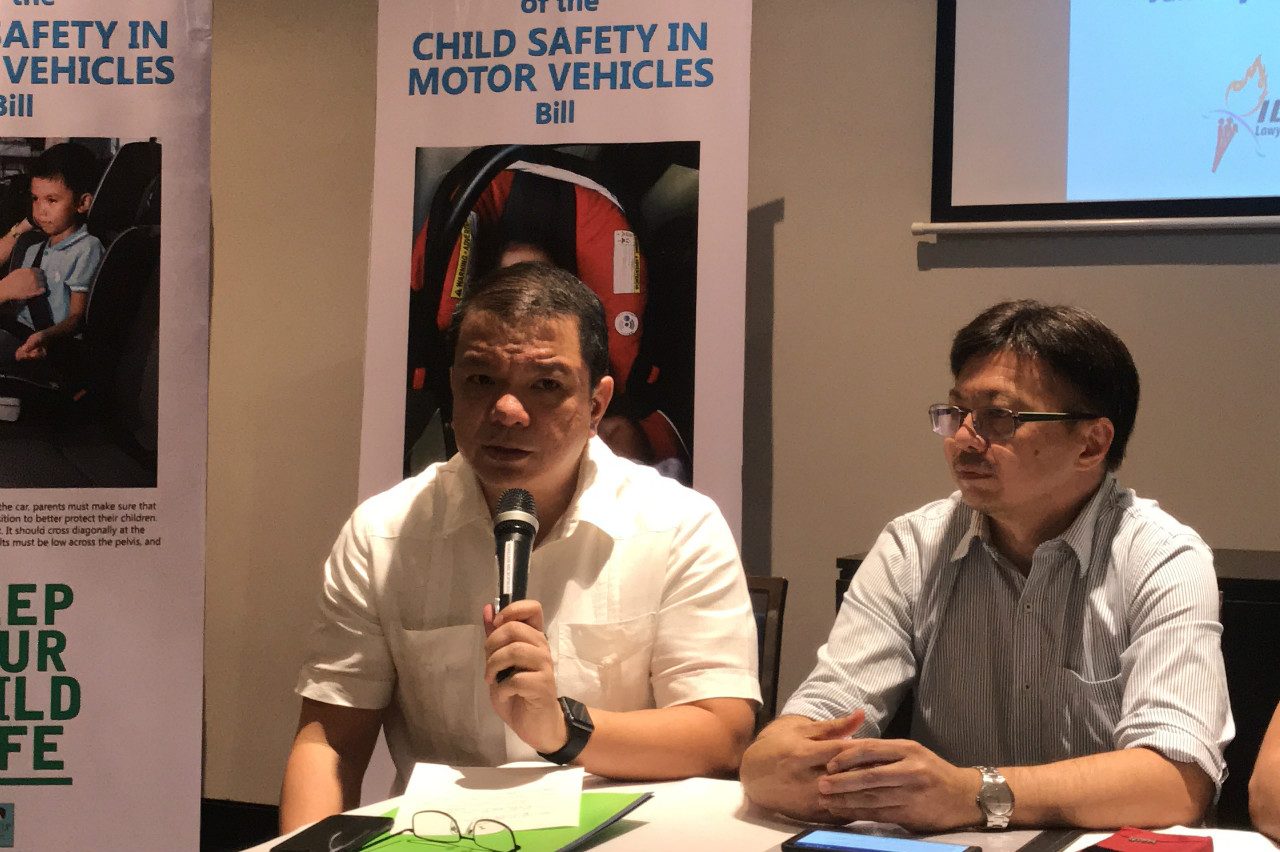SUMMARY
This is AI generated summarization, which may have errors. For context, always refer to the full article.

MANILA, Philippines – If passed into law, safety seats for kids will no longer be as expensive.
In a briefing on Wednesday, January 31, advocates pushing for a child restraints system inside motor vehicles argued that these will be cheaper if House Bill (HB) No. 6938 is passed into law. (READ: Seat belts are not enough for infants and children)
At current market rates, the average price of a brand new child car seat in the country costs P10,040.68 while a second-hand one costs P4,250.
Asked whether the bill is “anti-poor”, Jason Salvador, road safety project manager of Ateneo School of Government, said that current prices are expensive because not many in the Philippines buy it.
“Mukhang napakamahal ang child restraints kasi konti ang gumagamit. Asahan natin na marami na ‘yung gagamit, marami na ‘yung mag-susupply – baba na ang presyo nito at mag-nonormalize ito,” Salvador said.
(It looks like child restraints are very expensive because few people use it. Expect that when more people buy it, more [brands] will supply – prices will be cheaper and will normalize.)
“Sadly, this is the only way that we see to reduce injuries or deaths from road crash incidents that is why we are pursuing for this bill,” he added in a mix of English and Filipino.
Salvador clarified the bill will only require private vehicles to install child car seats. (READ: Your questions about child car seats answered)
With the modes of public transportation in the Philippines, Salvador acknowledged that installing child car seats will be a challenge. He said that the bill, when passed into law, will ask the Department of Transportation (DOTr) to conduct a study on how these seats can be incorporated in public utility vehicles.
“It’s time to study it. Majority uses PUVs but it’s not that easy. Maybe with the jeepney modernization, baka pwedeng maisama ito dahil challenge talaga ito (maybe it can be incorporated because it is really a challenge),” he said.
On Tuesday, January 30, HB No. 6938 passed the second reading at the House of Representatives.
While the Philippines has existing legislation mandating the use of seatbelts in cars, it does not guarantee protection for everyone who uses it, especially children and infants. (READ: Seats that save kids’ lives: Why are they rarely used in the Philippines? )
According to the World Health Organization, a child restraint system can drastically reduce the risk of injury for children aged 0-4. When children aged 0-4 have a rear-facing restraint on, the risk of injury is lessened by up to 80%, while children aged 0-4 with only a seat belt on have a lessened risk of injury of only 32%.
Data from the Philippine Statistics Authority show that an average of 667 children died every year from 2006 to 2015 due to road crash incidents.– Rappler.com
Add a comment
How does this make you feel?
There are no comments yet. Add your comment to start the conversation.